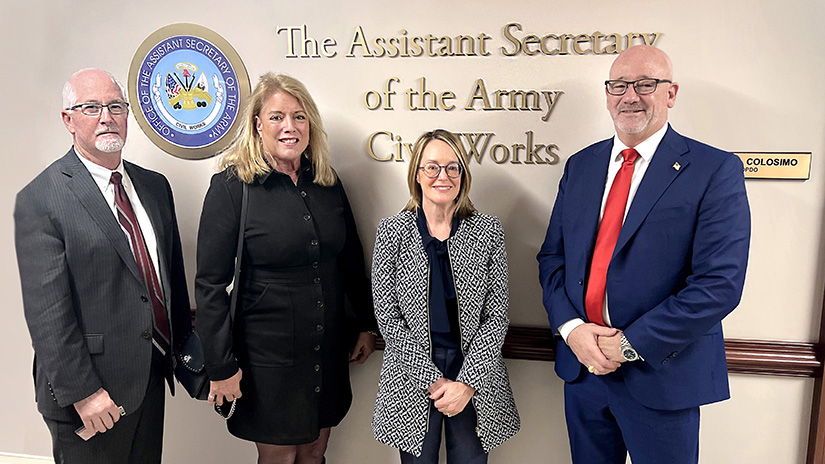Pinellas contingent visits Washington to vote for beach nourishment

A Pinellas County delegation led by County Commissioner Kathleen Peters traveled to Washington this week to further efforts to reestablish federally funded beach nourishment. The trip followed multiple discussions Commissioner Peters has had with the former and current White House administrations and a letter she sent to President Trump on Feb. 5 with the full support of the County Commission.
“Our meetings at the White House, Capitol Hill and the Pentagon were incredibly productive,” Commissioner Peters said. “The necessity of beach nourishment for Pinellas is clear to all—we need sand back on our beaches to protect our infrastructure and economy, and to preserve our way of life.”
Federal projects on Sand Key, Treasure Island and Long Key are on hold because of a requirement by the U.S. Army Corps of Engineers (USACE) that all property owners sign easements allowing public access and use wherever sand is placed. In previous nourishment cycles, USACE worked with the County to place as much sand as possible utilizing construction easements.
Well short of the 100 percent easements needed, the County has been pursuing a dual path of planning a County-led project while pressing federal officials for relief in the easement language that would make it easier to restore the federal projects.
Commissioners Peters was joined on the Washington visit on Monday, March 3, by Commissioner Chris Scherer, County Administrator Barry Burton and Public Works Director Kelli Hammer Levy. They attended a White House meeting in the morning, then met with Sen. Rick Scott and Rep. Anna Paulina Luna, who have been key advocates for federal relief, Senator Ashley Moody’s staff, and Stacey Brown, Acting Principal Deputy Secretary for the USACE.
“We look forward to continued dialog with our federal partners and are incredibly thankful to Senators Scott and Moody and Congresswoman Luna for continuing to advocate for us in D.C,” Peters said.
Federal beach nourishment has been taking place for decades on the Pinellas coast. It is critical for storm protection not only on the barrier islands, but also on the mainland across the Intracoastal Waterway. It is also vital to maintaining the quality of the County’s primary economic engine, tourism. The federal cost share on beach nourishment projects is 65 percent, so the County has long counted on it as an investment in our shoreline.